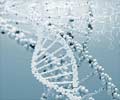Explore Audiogene, a gene therapy to correct genetic hearing loss in young children caused by DFNB9.

- The Audiogene trial introduces a pioneering first-ever gene therapy- SENS-501 drug, to address childhood deafness
- Administered through direct inner-ear injection, it showcases a high level of precision for targeted correction of genetic hearing loss
- It potentially restores inner ear cell function and hearing, offering an alternative option for cochlear implantation
Audiogene, the First Clinical Trial in France for a Gene Therapy to Treat Hearing Loss in Children
Go to source).
Hope for Little Ears: Breakthrough in Early Childhood Deafness Treatment
The Audiogene clinical trial represents a significant advancement in the field of gene therapy for the treatment of hereditary deafness. It has received approval in France to assess the safety and efficacy of a new gene therapy drug specifically targeting children aged between 6 and 31 months with profound hearing loss.Audiogene tested a gene therapy drug, SENS-501, to treat children with DFNB9, a form of hereditary deafness caused by mutations in the OTOF gene, which encodes a protein called otoferlin.
Did You Know?
In the U.S. about 1.7 per 1,000 babies suffer hearing loss after birth and among them, 20% of babies have genetic hearing loss with Down syndrome. Congenital cytomegalovirus infection during pregnancy is the common risk factor causing hearing loss among children.
Audiogene Clinical Trial Overview
The SENS-501 gene therapy drug will be directly injected into the child's inner ear with DFNB9 deafness, similar to cochlear implantation surgery.The procedure will be performed under general anesthesia by an ENT surgeon. The drug will be administered using an injection system so that the injected dose can be measured precisely and the inner ear structures can be preserved.
A gene can only enter inner ear cells if it is transported by a viral vector that is capable of crossing the cell membrane. In this case, the adeno-associated virus (AAV) was used to deliver the gene.
Since the OTOF gene is big, it is divided into two DNA fragments, each transported by an AAV, which are then assembled inside the inner ear cells, referred to as a dual AAV vector technology.
AAV vectors are harmless and non-pathogenic, reliable, and do not cause diseases. They are produced using the highest applicable industry standards and approved by health authorities for use in humans.
The SENS-501 drug corrected the genetic abnormality in the inner ear cells of children with hearing loss and restored inner ear cell function and hearing in children.
Read More to Know About ‘Novel Gene Therapy Reverses Hearing in Genetic Deafness’
Gene Therapy’s Revolutionary Benefits
Audiogene clinical trial is a major step forward for deaf children with otoferlin defects and brings hope to people with genetic deafness. It speeds up the development of therapies for individuals with hearing disorders.It is a technological and medical revolution that offers real hope for all children with congenital hearing loss and can be offered an alternative to cochlear implantation.
It can widen the indications to include other causes of hearing loss and catalyze the search for much-needed therapeutic solutions for a whole series of hearing impairments and vestibular disorders.
In summary, the Audiogene trial, a novel gene therapy for childhood deafness, aims to restore hearing in children with OTOF gene mutations. This innovative approach holds promise for transforming genetic hearing loss treatment and redefining developmental milestones among the younger population.
Reference:
- Audiogene, the First Clinical Trial in France for a Gene Therapy to Treat Hearing Loss in Children - (https://www.pasteur.fr/en/press-area/press-documents/audiogene-first-clinical-trial-france-gene-therapy-treat-hearing-loss-children)
Source-Medindia















